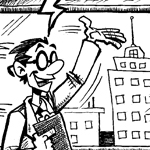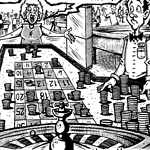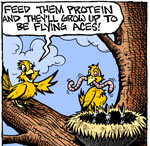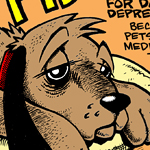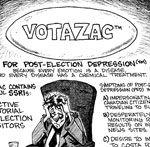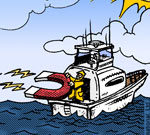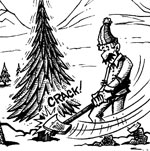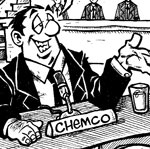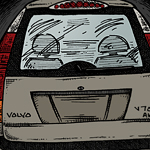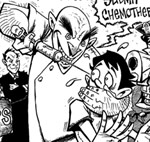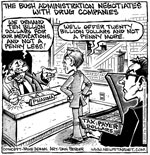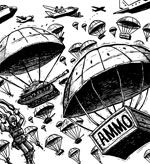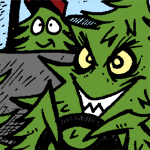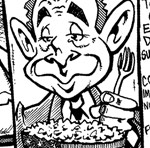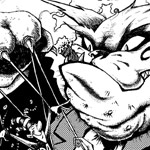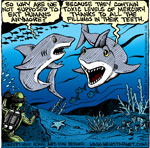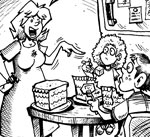Echinacea Really Works
| Share on Facebook | Share on Twitter | Share on Google+ |
Echinacea, pronounced eck-uh-NAY-shuh, is an American herb. Native to the mainland United States, echinacea is not found in the wild anywhere else in the world except for a few prairies in southern Canada. In the same plant family as daisies, asters, and sunflowers, most species of echinacea grow 1 to 4 feet (30 to 120 cm) tall and bear flowers with a dark cone in the middle surrounded by purple or yellow petals. The name of the plant comes from the Greek word echinos, meaning hedgehog, referring to the rough and prickly center of the flower.
Native Americans used poultices and teas of echinacea to treat wounds, skin infections, and colds. Three species of echinacea are commonly used in modern herbal medicine, including Echinacea purpurea or Echinacea purpurea magnus (purple coneflower), Echinacea angustifolia (narrow-leaf coneflower), and Echinacea pallida (pale coneflower). The root and the flower of the plant are used to make herbal medicine.
The American Experience of Echinacea
Archaeologists have found echinacea plants in the ruins of Native American pueblos dating back to the 1600's. European settlers to the North America began using echinacea as their primary herbal treatment in the 1800's.
About 1870, a German immigrant to Nebraska patented a medicine made with echinacea he sold as "Meyer's Blood Purifier." Dr. Meyer was so convinced that his elixir could cure any kind of toxin that he begged prominent physicians Dr. John King (author of King's American Dispensatory, the "bible" of American pharmacy until well into the twentieth century) and Dr. Uri Lloyd (president of the American Pharmaceutical Association) to allow him to do a demonstration. Meyer wanted to be bitten a rattlesnake so he could prove to these two widely respected physicians that echinacea, which he sold at "medicine shows" from a horse-drawn wagon he took from town to town, was the ultimate detoxifier of its time.
Neither physician agreed to the demonstration. Both of them considered Meyer to be a quack, and the term "medicine show" became a colloquial term for a medical con artist. Dr. Lloyd, however, eventually tested echinacea for treating diphtheria, scarlet fever, meningitis, measles, chicken pox, and influenza, the most devastating diseases of the nineteenth century, and concluded that it worked. Dr. Lloyd's family then became the leading manufacturer of the formula invented by Dr. Meyer.
Almost every home in the United States had a bottle of echinacea for treating infections next to a bottle of Castoria for treating constipation and a bottle of Campho-Phenique for treating skin problems up until the 1960's. My own family had all the three products in the medicine cabinet when I was a boy.
Echinacea Becomes a Popular Herbal Remedy in Germany
By 1970, echinacea had fallen out of favor in the United States, but it was beginning to catch on in Germany. Dr. Gerhard Madhaus (whose family's company, I should point out, partially funded my work when I was a consultant to the American Botanical Council) had proved in 1932 that the flowers of Echinacea purpurea had immune-stimulant properties. The complex sugars in the flower formed a molecular pattern that white blood cells identified as a bacterium. This stimulated the immune system to fight infections before the microbes actually entered the body.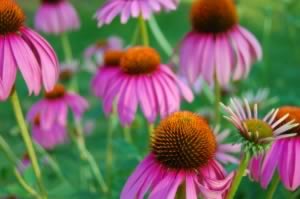
Another 400 studies in Germany also showed that preparations made from the roots of Echinacea angustifolia had similar immunostimulant capabilities. Echinacea became so popular in Germany that it was, and still is, covered by health insurance. And whatever you may have heard about bans on herbal medicine in the European Union, echinacea is still just as available to German consumers now as it has been since 1932.
How Echinacea Stimulates the Immune System
As I mentioned above, echinacea provides complex sugars that stimulate the immune system into getting ready to fight infection without stimulating the immune system to cause inflammation. I spent three days discussing this topic one-on-one with a natural products researcher named Shannon Mar at the University of California at San Francisco Medical School some years ago, so please forgive if I go into a little too much detail.
Many diseases of inflammation, including asthma, arthritis, colds and flu (which we would never notice if our bodies weren't determined to destroy them with fever and tissue destruction) result from an imbalance of the white blood cells that "zap" foreign particles in the body, such as the CD4+ cells, and the white blood cells that limit tissue destruction in the process of destroying microbes and allergens, such as the CD8+ cells. The polysaccharides in echinacea stimulate infection-fighting white blood cells and tissue-protective white blood cells in a balanced fashion.
When I had three days of discussion on this topic with Dr. Mar back in 1996, however, scientists did not yet know quite how all this worked. Back then it was thought that echinacea polysaccharides helped regulated the production of white blood cells. Now scientists know that echinacea polysaccharides help regulate the movement of white blood cells.
The immune system creates "dendritic cells" to act as a kind of patrol cop throughout vulnerable tissues. A dendritic cell is a cell with long projections that look a little like an octopus or a squid that probe tissues looking for germs. The faster it moves the more infections it will locate.
The dendritic cells do not kill bacteria or viruses themselves but they send signals to CD4 cells to take care of the invaders. The sooner the dendritic cell locates the infection, the less inflammation the immune system has to use to destroy it. The less inflammation produced by the immune system, the fewer symptoms the infection causes.
Dendritic cells have a very short lifespan. They are made in bone marrow, mature in the bloodstream, and die in the lymph glands in just a few days. That's why you can't take echinacea this week and expect it to protect you from infection next week. That's also why there are dozens of studies of echinacea, one proving that echinacea fights colds and flu and one proving that it doesn't. How well echinacea works for you are all about how often you take it and whether you were taking it before you were exposed to the virus.
What Scientists Say About Echinacea for Colds and Flu
There are hundreds of studies of echinacea in the scientific literature, but there are two studies that illustrate the principles consumers need to know about echinacea.
One study was published in 1992 in the German-language journal Zeitschrift fur Phytotherapie. It found that taking two droppers of echinacea extract a day had a small effect on colds symptoms, but taking four droppers of echinacea extract a day had a large effect.
Another study published in the Swiss German-language journal Schweitzerische Zeitschrift fur Ganzheit Medizin reported a study of an Echinacea purpurea tablet used in a study at the University of Uppsala in Sweden. Three-fourths of users reported milder symptoms of colds and flu when they took the tablet for a full eight days.
The studies that don't find a benefit from taking echinacea usually use a dose that is too small or don't require test participants to take echinacea long enough. Echinacea extracts will help colds or flu, but adults need four droppers of Echinacea purpurea fluidextract a day, not two, or 900 mg of Echinacea angustifolia root powder per day, not 500 mg.
Don't take one dose and expect your symptoms suddenly to disappear. Echinacea isn't actually doing the work of getting you better. Your immune system has to do the work of getting you better. Echinacea only stimulates your body to protect itself more completely with less inflammation.
If you have a strep throat, you might also want to take goldenseal or Oregon grape root, in dosages recommended by the manufacturer. These herbs have a direct antibacterial effect that does not depend on the action of the immune system. They do not, however, have a significant effect on the viruses that cause colds and flu.
Echinacea for Ear Infections in Children
Echinacea is also a popular remedy for ear infections in children. Because the throat, nose, and sinuses of children are small, a cold or flu can cause unusual swelling on the ear canal. This traps bacteria in the middle ear and causes ear infections. The effects of a cold or allergy are magnified until the child's facial structure grows larger and there is less pressure on the ear canal.
Herbalists have said for years that "everybody knows" that children's ear infections should be treated with a non-alcoholic (glycerin) extract of Echinacea angustifolia and never with an alcohol extract of Echinacea purpurea. The important action in treating children's ear infections is not the infection fighting of Echniacea purpurea, it's the inflammation soothing of Echinacea angustifolia.
Nonetheless, in 2004 researchers at the University of Arizona designed a test of alcohol extracts of Echinacea purpurea combined with osteopathic manipulations to treat children's ear infections. They used the wrong herb, and just to make the results more confusing, added another variable, massaging the scalp and skull. Some children received "myofascial release," which was supposed to help relieve ear pain but might actually increase pressure on the ear canal, and others had their cranial bones massaged. To add to the confusion, the scientists "accidentally" put all the sicker children in the echinacea treatment group and only offered echinacea after symptoms appeared. They did not use echinacea for prevention. Then the scientists reported "Echinacea does not work!"
Well, yeah. If you use the wrong echinacea for children in the wrong form at the wrong time and also start pressing on the ear canal just to make sure the child stays sick, the child will stay sick.
If you want to use echinacea to treat ear infections in children, use Echinacea angustifolia. Also give
propolis and vitamin C, and start giving these supplements at the beginning of colds and flu season. Don't wait for symptoms to appear. Avoid giving alcohol-based echinacea tinctures or alcohol-based tinctures of other herbs to young children. Alcohol, even in small amounts, is not idea for growing brains.
Echinacea for Other Conditions
Echinacea is also used for some other inflammatory conditions. Some people use echinacea to relieve arthritis pain. Frankly, it would not be my first choice.
There has been some discussion among scientists about the use of echinacea by people in recovery from cancer, especially African-American women who have had breast cancer. All of the studies estimated the use of "herbs" rather than trying to find out whether any specific herb had any specific benefit.
How to Use Echinacea for Colds, Flu, and Ear Infections
Echinacea is only as effective as the purity of the herb used to make the product. I advise sticking to tried and true brands such as Echinaforce (Bioforce) by the A. Vogel Company for adults and Solaray Echinacea Angustifolia Roto capsules for children. I don't usually recommend echinacea teas, because they tend to taste "tingly," although that is just a sign that the tea provides alkylamides that relieve inflammation. If you don't keep using the tea because it tastes a little "off," you won't get the needed protection. Echinacea throat sprays are better for relieving inflammation than for fighting infection. You get the immunostimulant benefits of echinacea through your digestive tract.
The hot papaya echinacea, by the way, is a beautiful ornamental plant, but it is not used as an herbal medicine.
There are many other fine brands of echinacea products, and I'll be happy to discuss them with you privately through the Comments Box, but it's just a lot simpler to reach for the products you know will work.
Are There Any Side Effects from Echinacea?
For many years I have advised caution with Echinacea angustifolia products for people who take certain prescription drugs. There is laboratory evidence that Echinacea angustifolia deactivates the liver enzyme CYP3A4. This compound enables the liver to detoxify a wide range of medications, including anabolic steroids, the chemo therapy drug methotrexate (Methotrex), which is used in treating cancer, lupus, and rheumatoid arthritis, astemizole (Hismanal) for allergies, nifedipine (Adalat) and captopril (Capoten) for high blood pressure, and sildenafil (Viagra) for erectile dysfunction in men and failure to achieve orgasm in women, as well as many other drugs.
Echinacea angustifolia might help maintain levels of these drugs in the bloodstream and make them more effective, or it might also cause them to accumulate to levels at which they cause side effects. If you take any of these drugs, you should not take Echinacea angustifolia.(Learn more about Echinacea Side Effects).
Based on the understanding scientists had back in the 1990's, I used to counsel people who had HIV or AIDS not to take echinacea products. But since scientists now know that the herb works by stimulating the movement of T-cells rather than then number of T-cells, I only advise people with HIV and AIDS to let their doctors know about any herbal products they take.
I also advise that people taking chemotherapy for any condition avoid echinacea until they have finished their medical treatment. There are numerous liver enzymes that process numerous chemical components of echninacea. There are literally thousands of potential interactions with chemotherapy drugs, and if you are going through the pain, expense, and side effects of chemo, you really want to give your treatment every chance to work. Take immune stimulant herbs after you have finished chemotherapy treatments.
I'll be happy to discuss any aspects of this article with you in the Comments section. Please allow up to 72 hours for a reply.
Selected References:
Baggiolini M, Dewald B, Moser B. Human Chemokines: an update. Annu Rev Immunol. 1997; 15:675-705. doi: 10. 1146/annurev. immunol. 15. 1. 675.
Banchereau J, Briere F, Caux C, Davoust J, Lebecque S, Liu YJ, Pulendran B, Palucka K. Immunobiology of dendritic cells. Annu Rev Immunol. 2002; 18:767-811. doi: 10. 1146/annurev. immunol. 18. 1. 767.
Banchereau J, Steinman RM. Dendritic cells and the control of immunity. Nature. 1998; 392:245-52. doi: 10. 1038/32588.
Barrett B, Kiefer D, Rabago D. Assessing the risks and benefits of herbal medicine: an overview of scientific evidence. Altern Ther Health Med. 1999; 5:40-49.
Barrett B, Vohmann M, Calabrese C. Echinacea for Upper Respiratory Infection: Evidence-based clinical review.JFamPrac.1999;48:628-635.
Barrett BP, Brown RL, Locken K, Maberry R, Bobula JA, D'Alessio D. Treatment of the common cold with unrefined echinacea. A randomized, double-blind, placebo-controlled trial..Ann Intern Med.2002;137:939-946.
Bauer V, Jurcic K, Puhlmann J, Wagner V. Immunologicin vivo and in vitro examinations of echinacea extracts. Arzneim Forsch. 1998; 38:276-281.
Bluestone CD. Role of surgery for otitis media in the era of resistant bacteria.Pediatr Infect Dis J.1998;17:1090-1098. doi: 10.1097/00006454-199811000-00040.discussion 1099-1100.
Boring L, Gosling J, Chensue SW, Kunkel SL, Farese RVJ. Impaired monocyte migration and reduced type 1 (Th1) cytokine responses in C-C chemokine receptor 2 knockout mice. J Clin Invest. 1997; 100:2552-61. doi: 10. 1172/JCI119798.
Braunig B, Limburg E, Knick E. Enhancement of resistance in common cold by echinacea purpurea. Z Phytother. 1992; 13:7-13.
Brocker T, Riedinger M, Karjalainen K. Targeted expression of major histocompatibility complex (MHC) class II molecules demonstrates that dendritic cells can induce negative but not positive selection of thymocytes in vivo. J Exp Med. 1997; 185:541-50. doi: 10. 1084/jem. 185. 3. 541.
Burger RA, Torres AR, Warren RP, Caldwell VD, Hughes BG. echinacea-induced cytokine production by human macrophages. Int J Immunopharmacol. 1997; 19:371-379. doi: 10. 1016/S0192-0561(97)00061-1.
Burger RA, Torres AR, Warren RP, Caldwell VD, Hughes BG. Echinacea-induced cytokine production by human macrophages. Int J Immunopharmacol.1997;19:371-379. doi: 10.1016/S0192-0561(97)00061-1.
Calvano SE, Xiao W, Richards DR, Felciano RM, Baker HV, Cho RJ, Chen RO, Brownstein BH, Cobb JP, Tschoeke SK, Miller-Graziano C, Moldawer LL, Mindrinos MN, Davis RW, Tompkins RG, Lowry SF. A network-based analysis of systemic inflammation in humans. Nature. 2005; 13; 437(7061):1032-7. doi: 10. 1038/nature03985.
Canedy D. Real medicine or medicine show? Growth of herbal sales raises issues about value. New York Times. 1998; 23:C1.
Carninci P. et al. The transcriptional landscape of the mammalian genome. Science. 2006; 309(5740):1559-63.
Casselbrant M, Mandel E. Epidemiology. In: Rosenfeld R, Bluestone C, editor. Evidence-Based Otitis Media.2. Hamilton, Ontario: BC Decker; 2003.
Celluzzi CM, Mayordomo JI, Storkus WJ, Lotze MT, Falo LD. Peptide-pulsed dendritic cells induce antigen-specific CTL-mediated protective tumor immunity. J Exp Med. 1996; 183:283-7. doi: 10. 1084/jem. 183. 1. 283.
Chonmaitree T, Revai K, Grady JJ, Clos A, Patel JA, Nair S, Fan J, Henrickson KJ. Viral upper respiratory tract infection and otitis media complication in young children. Clin Infect Dis.2008;46:815-823. doi: 10.1086/528685.
Cohen HA, Varsano I, Kahan E, Sarrell EM, Uziel Y. Effectiveness of an herbal preparation containing echinacea, propolis, and vitamin C in preventing respiratory tract infections in children: a randomized, double-blind, placebo-controlled, multicenter study. Arch Pediatr Adolesc Med.2004;158:217-221. doi: 10.1001/archpedi.158.3.217.
Dermime S, Armstrong A, Hawkins RE, Stern PL. Cancer vaccines and immunotherapy. Br Med Bull. 2002; 62:149-162. doi: 10. 1093/bmb/62. 1. 149.
Dowell SF, Marcy S, Phillips W, Gerber MA, Schwartz B. Otitis media - principles of judicious use of antimicrobial agents. Pediatrics.1998;101:165-171.
Ernst E. Ann Intern Med. Vol. 136. Ginkgo:, St. John's Wort, Ginseng, echinacea, Saw Palmetto, and Kava; 2002. The risk-benefit profile of commonly used herbal therapies; pp. 42-53.
Frymann VM. Diagnosis and treatment of otitis media in children. In: Frymann VM, editor. The Collected Papers of Viola M Frymann, DO. American Academy of Osteopathy; 1998. pp. 110-111.
Galbreath WO. Acute otitis media: including its postural and manipulative treatment. Journal of the American Osteopathic Association.1929. pp. 377-379.
Gary S. Overcoming Self: A company tries to turn the immune system against cancer. Scientific American. 2004; 219:18-19.
Gerke V, Moss SE. Annexins: From Structure to Function. Physiol Rev. 2002; 82:331-371.
Giebink GS. Preventing otitis media. Ann Otol Rhinol Laryngol Suppl.1994;163:20-23.
Goel V, Chang C, Slama JV, Barton R, Bauer R, Gahler R, Basu TK. Alkylamides of echinacea purpurea stimulate alveolar macrophage function in normal rats. Int Immunopharmacol. 2002; 2(2-3):381-7. doi: 10. 1016/S1567-5769(01)00163-1.
Inaba K, Steinman RM, Pack MW, Aya H, Inaba M, Sudo T, Wolpe S, Schuler G. Identification of proliferating dendritic cell precursors in mouse blood. J Exp Med. 1992; 176:1693-1702. doi: 10. 1084/jem. 176. 6. 1693.
Jakob T, Udey MC. Regulation of E-cadherin-mediated adhesion in Langerhans cell-like dendritic cells by inflammatory mediators that mobilize Langerhans cells in vivo. J Immunol. 1998; 160:4067-73.
Kobayashi Y. Langerhans' cells produce type IV collagenase (MMP-9) following epicutaneous stimulation with haptens. Immunology. 1997; 90:496-501. doi: 10. 1046/j. 1365-2567. 1997. 00212. x.
Lee KM, Chuang E, Griffin M. Molecular basis of T cell inactivation by CTLA-4. Science. 1998; 282:2263-2266. doi: 10. 1126/science. 282. 5397. 2263.
Lockhart DJ, Dong H, Byrne MC, Follettie MT, Gallo MV, Chee MS, Mittmann M, Wang C, Kobayashi M, Horton H, Brown EL. Expression monitoring by hybridization to high-density oligonucleotide arrays. Nat Biotechnol. 1996; 14:1675-1680. doi: 10. 1038/nbt1296-1675.
Luettig B, Steinmuller C, Gifford GE, Wagner H, Lohmann-Matthes ML. Macrophage activation by the polysaccharide arabinogalactan isolated from plant cell cultures of Echinacea purpurea.J Natl Cancer Inst.1989;81:669-675. doi: 10.1093/jnci/81.9.669.
Luster AD. Chemokines-chemotactic cytokines that mediate inflammation. N Engl J Med. 1998; 338:436-45. doi: 10. 1056/NEJM199802123380706.
Mark JD, Grant KL, Barton LL. The use of dietary supplements in pediatrics: a study of echinacea.Clinical Pediatrics.2001;40:265-269. doi: 10.1177/000992280104000505.
Matthias A, Banbury L, Bone KM, Leach DN, Lehmann RP. echinacea alkylamides modulate induced immune responses in T-cells. Fitoterapia. 2008; 79(1):53-8. doi: 10. 1016/j. fitote. 2007. 07. 012.
Melchart P, Walther E, Linde K, Brandmaier R, Lersch C. Echinacea root extracts for the prevention of upper respiratory tract infections.Archives of Family Medicine.1998;7:541-545. doi: 10.1001/archfami.7.6.541.
Miconnet I, Coste I, Beermann F, Haeuw JF, Cerottini JC, Bonnefoy JY, Romero P, Renno T. Cancer vaccine design: A novel bacterial adjuvant for peptide-specific CTL induction. J Immunol. 2001; 166:4612-9.
Mills MV, Henley CE, Barnes LL, Carreiro JE, Degenhardt BF. The use of osteopathic manipulative treatment as adjuvant therapy in children with recurrent acute otitis media.Arch Pediatr Adolesc Med.2003;157:861-866. doi: 10.1001/archpedi.157.9.861.
Moher D, Schulz KF, Altman DG. The CONSORT statement: revised recommendations for improving the quality of reports of parallel group randomized trials.BMC Med Res Methodol.2001;1:2. doi: 10.1186/1471-2288-1-2.
Moresi A. Otitis media: an Osteopathic approach.The Cranial Letter.1997;50:14-17.
Nestle FO, Aligagic S, Gilliet M, Sun Y, Grabbe S, Dummer R, Burg G, Schadendorf D. Vaccination of melanoma patients with peptide- or tumor lysate-pulsed dendritic cells. Murine dendritic cells pulsed with whole tumor lysates mediate potent antitumor immune responses in vitro and in vivo. Nat Med. 1998; 4:328-32. doi: 10. 1038/nm0398-328.
Palucka AK, Laupeze B, Aspord C, Saito H, Jego G, Fay J, Paczesny S, Pascual V, Banchereau J. Immunotherapy via dendritic cells. Adv Exp Med Biol. 2005; 560:105-114. full_text.
Pandey A, Mann M. Proteomics to study genes and genomes. Nature. 2000; 405:837-846. doi: 10. 1038/35015709.
Pereira SR, Faca VM, Gomes GG, Chammas R, Fontes AM, Covas DT, Greene LJ. Changes in the proteomic profile during differentiation and maturation of human monocyte-derived dendritic cells stimulated with granulocyte macrophage colony stimulating factor/interleukin-4 and lipopolysaccharide. Proteomics. 2005; 5:1186-1198. doi: 10. 1002/pmic. 200400988.
Peters W, Dupuis M, Charo IF. A mechanism for the impaired IFN-gamma production in C-C chemokine receptor 2 (CCR2) knockout mice: role of CCR2 in linking the innate and adaptive immune responses. J Immunol. 2000; 165:7072-77.
Pintal WJ, Kurtz ME. An integrated osteopathic treatment approach in acute otitis media. Journal of the American Osteopathic Association. 1989;89:1139-1141.
Reinhard G, Marten A, Kiske SM, Feil F, Bieber T, Schmidt-Wolf IG. Generation of dendritic cell-based vaccines for cancer therapy. Br J Cancer. 2002; 86(1):529-1533. doi: 10. 1038/sj. bjc. 6600316.
Revai K, Dobbs LA, Nair S, Patel JA, Grady JJ, Chonmaitree T. Incidence of acute otitis media and sinusitis complicating upper respiratory tract infection: the effect of age. Pediatrics. 2007;119:e1408-1412. doi: 10.1542/peds.2006-2881.
Roesler J, Emmendorffer A, Steinmuller C, Luettig B, Wagner H, Lohmann-Matthes ML. Application of purified polysaccharides from cell cultures of the plant echinacea purpurea to test subjects mediates activation of the phagocyte system. Int J Immunopharmacol. 1991; 13:931-941. doi: 10. 1016/0192-0561(91)90046-A.
Roesler J, Emmendorffer A, Steinmuller C, Luettig B, Wagner H, Lohmann-Matthes ML. Application of purified polysaccharides from cell cultures of the plant Echinacea purpurea to test subjects mediates activation of the phagocyte system. Int J Immunopharmacol.1991;13:931-941. doi: 10.1016/0192-0561(91)90046-A.
Rollins BJ. Chemokines. Blood. 1997; 90:909-28.
Rudolf B. Chemical, analysis and immunological investigations of echinacea phytopharmaceuticals. Immunomodulatory Agents from Plants. 1999. pp. 41-88.
Sawni A, Ragothaman R, Thomas RL, Mahajan P. The use of complementary/alternative therapies among children attending an urban pediatric emergency department. Clin Pediatr. 2007;46:36-41. doi: 10.1177/0009922806289307.
Sawyer CE, Evans RL, Boline PD, Branson R, Spicer A. A feasibility study of chiropractic spinal manipulation versus sham spinal manipulation for chronic otitis media with effusion in children. J Manipulative Physiol Ther. 1999;22:292-298. doi: 10.1016/S0161-4754(99)70061-8.
Schoop R, Klein P, Suter A, Johnston SL. echinaceain the prevention of induced rhinovirus colds: a meta-analysis. Clin Ther. 2006; 28:174-183. doi: 10. 1016/j. clinthera. 2006. 02. 001.
Shah SA, Sander S, White CM, Rinaldi M, Coleman CI. Evaluation of echinaceafor the prevention and treatment of the common cold: a meta-analysis. Lancet Infect Dis. 2007; 7:473-480. doi: 10. 1016/S1473-3099(07)70160-3.
Shakeel M, Little SA, Bruce J, Ah-See KW. Use of complementary and alternative medicine in pediatric otolaryngology patients attending a tertiary hospital in the UK. Int J Pediatr Otorhinolaryngol.2007;71:1725-1730. doi: 10.1016/j.ijporl.2007.07.009.
Shimono A, Behringer RR. Angiomotin regulates visceral endoderm movements during mouse embryogenesis. Current Biology. 2003; 13(7):613-7. doi: 10. 1016/S0960-9822(03)00204-5.
Sozzani S, Allavena P, Vecchi A, Mantovani A. The role of chemokines in the regulation of dendritic cell trafficking. J Leukoc Biol. 1999; 66(1):1-9.
Spigelblatt LS, Laine-Ammara G, Pless IB, Guyver A. The use of alternative medicine by children. Pediatrics. 1994;94:811-814.
Subcommittee on Management of Acute Otitis Media, American Academy of Pediatrics Diagnosis and management of acute otitis media. Pediatrics. 2004;113:1451-1465. doi: 10.1542/peds.113.5.1451.
Subcommittee on Otitis Media with Effusion, American Academy of Pediatrics Otitis media with effusion. Pediatrics. 2004;113:1412-1429. doi: 10.1542/peds.113.5.1412.
Tang A, Amagai M, Granger LG, Stanley JR, Udey MC. Adhesion of epidermal Langerhans cells to keratinocytes mediated by E-cadherin. Nature. 1993; 361:82-85. doi: 10. 1038/361082a0.
Taylor JA, Weber W, Standish L, Quinn H, Goesling J, McGann M, Calabrese C. Efficacy and safety of echinacea in treating upper respiratory tract infections in children: a randomized controlled trial. JAMA.2003;290:2824-2830. doi: 10.1001/jama.290.21.2824.
Thompson CB, Allison JP. The emerging role of CTLA-4 as an immune attenuator. Immunity. 1997; 7:445-450. doi: 10. 1016/S1074-7613(00)80366-0.
Wang CY, Chiao MT, Yen PJ, Huang WC, Hou CC, Chien SC, Yeh KC, Yang WC, Shyur LF, Yang NS. Modulatory effects of echinacea purpurea extracts on human dendritic cells: A cell- and gene-based study. Genomics. 2006; 88:801-808. doi: 10. 1016/j. ygeno. 2006. 08. 011.
Wang CY, Staniforth V, Chiao MT, Hou CC, Wu HM, Yeh KC, Chen CH, Hwang PI, Wen TN, Shyur LF, Yang NS. Genomics and proteomics of immune modulatory effects of a butanol fraction of echinacea purpurea in human dendritic cells. BMC Genomics. 2008; 9(1):479. doi: 10. 1186/1471-2164-9-479.
Wang SY, Kuo YH, Chang HN, Kang PL, Tsay HS, Lin KF, Yang NS, Shyur LF. Profiling and characterization of antioxidant activities in Anoectochilus formosanus Hayata. J Agric Food Chem. 2002; 50:1859-1865. doi: 10. 1021/jf0113575.
Wong CM, Chun AC, Kok KH, Zhou Y, Fung PC, Kung HF, Jeang KT, Jin DY. Characterisation of human and mouse peroxiredoxin IV: evidence of inhibition by Prx-IV of epidermal growth factor- and p53-induced reactive oxygen species. Antioxid Redox Signal. 2002; 2:507-518. doi: 10. 1089/15230860050192288.
Zhai Z, Solco A, Wu L, Wurtele ES, Kohut ML, Murphy PA, Cunnick JE. echinacea increases arginase activity and has anti-inflammatory properties in RAW 264. 7 macrophage cells, indicative of alternative macrophage activation. J Ethnopharmacol. 2009; 25; 122(1):76-85. doi: 10. 1016/j. jep. 2008. 11. 028.
-
Skin CareMen Skin Care
-
Free ResourcesFree eBooks
-
Half the costs of illness are wasted on conditions that could be prevented.Dr. Joseph Pizzorno
-
What We RecommendIf you do an analysis of the ingredients in a bottle of
 Total Balance and compare with other products you will find that it provides exceptional value for money…even against simple mass produced products with lower bottle costs.
Total Balance and compare with other products you will find that it provides exceptional value for money…even against simple mass produced products with lower bottle costs.
-
